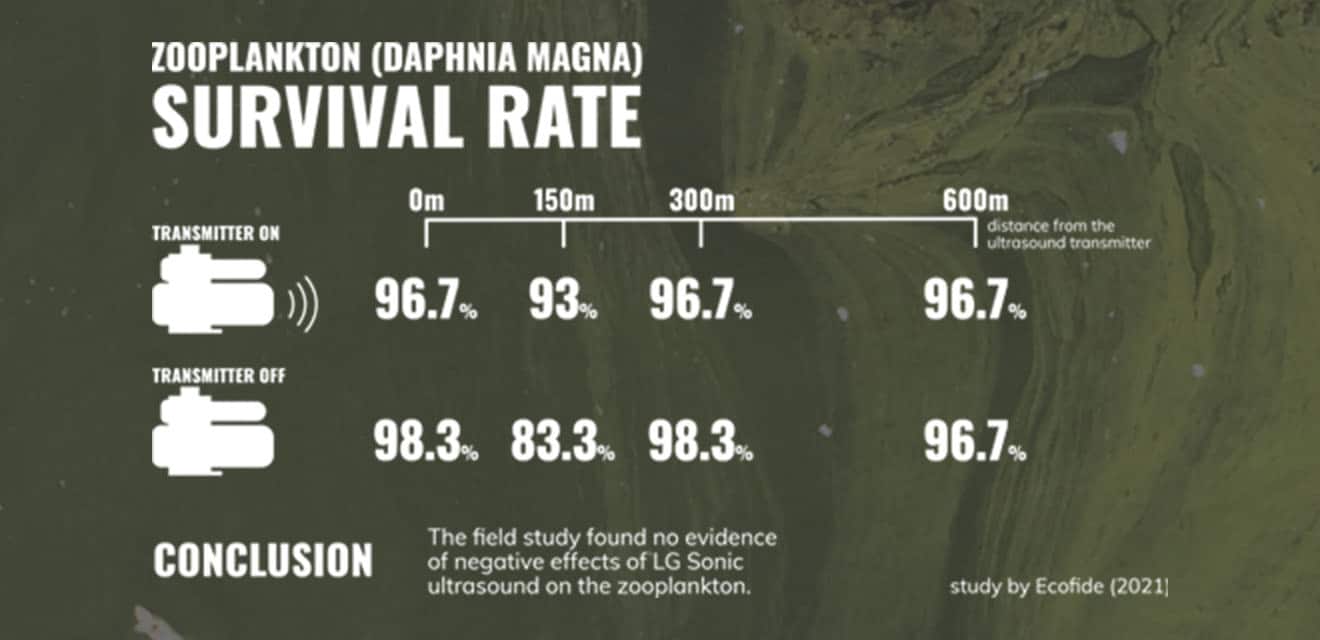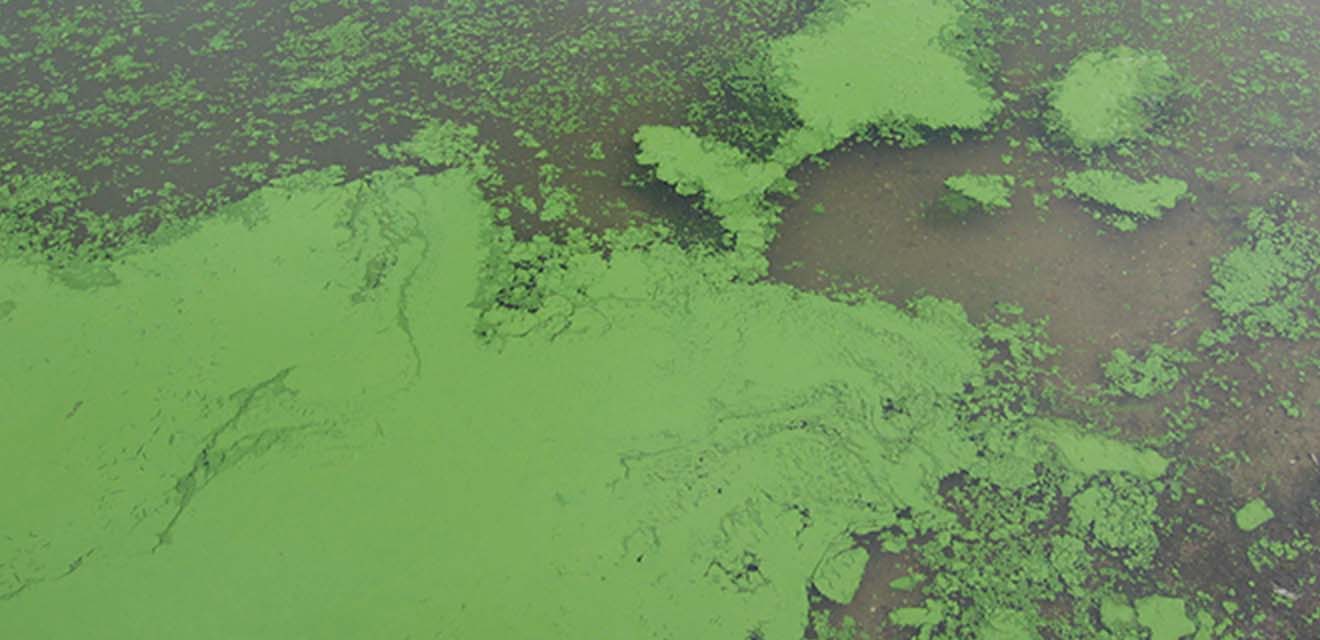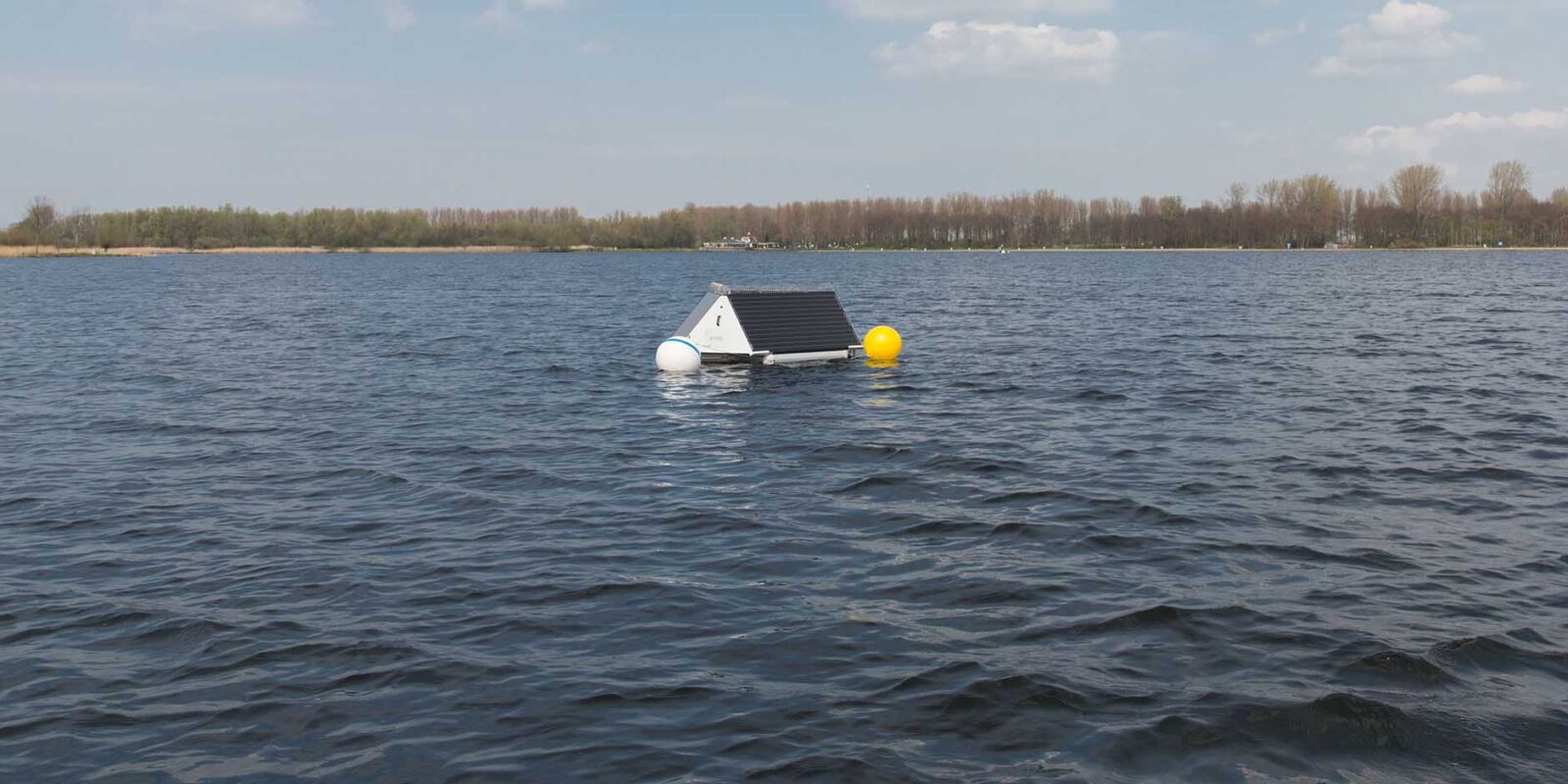- In 2017, Ecofide conducted the initial research on the effect of ultrasound on zooplankton;
- In 2021, LG Sonic changed the ultrasonic frequency and Ecofide redid the research;
- It was concluded that this algae treatment method is safe for zooplankton.

The scope of the study
Back in the summer of 2017, a study commissioned by the Dutch water board and carried out by the research agency Ecofide aimed to discover the impact of LG Sonic’s ultrasound on zooplankton.
The research was part of a two-year pilot project of the Municipality of Zoetermeer, Hoogheemraadschap Rijnland, and LG Sonic. It was concluded that the ultrasonic waves emitted by the MPC-Buoy system are safe for zooplankton.
New research
This year, LG Sonic changed the ultrasound intensity and repeated the 2017 field experiments to determine if and how the new settings affected zooplankton.
To answer this, the study applied a similar method used by the Delfland Water Board for years while studying the effects of plant protection products (Ecofide, 2008).
For this new experiment, water fleas (Daphnia magna) were caged for 7 days at different locations and under different conditions. After a week, the number of surviving water fleas (survival rate) and the number of young produced (reproduction rate) were counted.
Methodology
The experiment compared the survival and reproduction rates of Daphnia magna at 0m from the ultrasound transmitter to cages located at 150m, 300m, and 600m away from the transmitter.
The results were also compared to the survival and reproduction rate of the water fleas at the same locations, but with the ultrasound transmitters switched off before the harmful algae bloom (HAB) season.

Results and conclusion
The survival rate of all the water fleas used in the experiment was above 95%. No significant statistical difference (p>0.05) in the survival of the water fleas was found. This is in line with the findings of the similar field experiments carried out during the two-year pilot on the Zoetermeerseplas (Ecofide, 2017). No differences were found in survival due to the transmitted ultrasound.
The reproduction rate was slightly higher for the water fleas tested before the HAB season. No significant difference was found between the reproduction rates of the animals tested in the same week at different distances from the transmitter. A possible explanation for the differences observed could be the higher presence of blue-green algae during the HAB season, which could negatively impact the water fleas. This result is also in line with the findings of the field experiments conducted in 2017.
Eco-friendly approach to algae control
LG Sonic manufactures technological solutions that control harmful algal blooms without disturbing the natural balance of aquatic ecosystems.
To achieve this, our systems use low-power ultrasound that only targets algae growth without harming fish, plants, or any other aquatic organisms.
Our unique combination of ultrasonic frequencies and programs (aka Chameleon Technology™) targets a broad range of algae species.
